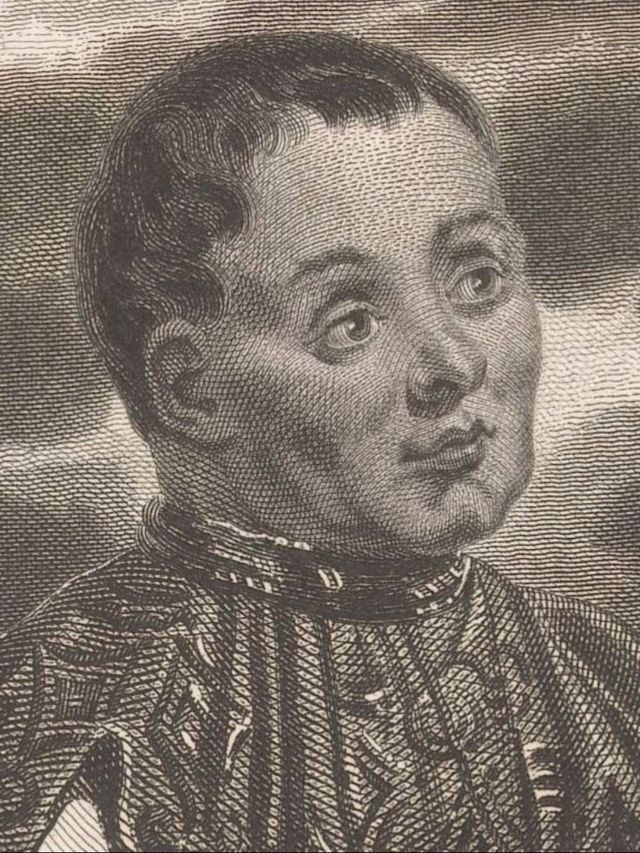July 1380, Chateauneuf-de-Randon. The water from the fountain killed du Guesclin
 The cenotaph | ©Ludovic Péron / CC-BY-SA
The cenotaph | ©Ludovic Péron / CC-BY-SAThe small museum
Inside the city hall, the museum evokes famous Duguesclin’s striking events: objects, engravings, archives images, dummies…
Bertrand immortalized!
Here’s a statue made by Hector Lemaire and given to the city in 1888.
The pedestal is made of Volvic’s stone.
The mausoleum
It’s a cenotaph, located in a place called l'Habitarelle.
They put it here in 1830, where our hero died!
The cenotaph is a memorial funeral monument, which means the last remains are not inside.
But where are they?? Ah, ah…
Looking for Duguesclin’s remains is like making a puzzle:
- his bones were buried in the basilica of Saint-Denis, next to the kings of France!
- his heart lies in Brittany, in the basilica of Saint-Sauveur of Dinan.
- his ″guts recumbent statue″ is in the city of le Puy-en-Velay, in church of Saint-Laurent.
- his boiled flesh (ugh) used to lie in Montferrand in the church des Cordeliers: a grave destroyed during the French Revolution...
After his death, the Breton made a big travel, from Chateauneuf-de-Randon: his body made a slow ascent towards Western France, in Brittany, but his remains stopped on the way!
When the cortege arrived in Le Mans, king Charles VII mentioned the fact Duguesclin had to be buried in Saint-Denis…
We can see those sentences on the cenotaph’s faces: ″This monument was raised by the Republic, in memory of Bertrand Duguesclin, Joan of Arc’s precursor.″ and ″Here, on July 13th 1380, Duguesclin died.″
Spring of all problems?
The tradition says Duguesclin died because he drank water from a fountain (the spring of la Glauze runs next to the mausoleum).
He fought under a hot sun, with his heavy armour, and the icy water was fateful to him…
The castle: France 1 - England 0
Located top of the village, the remains of Randon’s ″New castle″: ruins of the ″English tower″.
In front of this fortress, Duguesclin kicked the bucket, on July 1380. Lungs congestion, said historians, thermal shock said others...
At that time, the area was devastated by crooks and by the English army.
So, France decided to send royal troops, there, leading by the loyal Bertrand Duguesclin. Châteauneuf was besieged by the English.
Bertrand turned up, and fought… during 15 days! He fought against the enemy, who had plenty of food and who resisted, in their fortified castle.
He died in front of the ramparts, at the age of 60…
The legend says before his death, he gave his sword to marshal of Sancerre, in order to give it to the king of France. And when he finally died, they didn’t give up the siege.
The English finally surrendered and their captain gave the city’s keys to Sancerre.
They made a kind of ceremony where the defeated dropped off those keys on Duguesclin’s grave...

